The number of reported cyber-crimes increased by more than 25% in 2018. 45% of these were from UP & Karnataka.
NCRB (National Crime Records Bureau) has been publishing the data related to Cyber Crimes in its CII (Crimes in India) report since 2002. Cyber Crimes are one of the more recent categories of crime and there exists an ambiguity in terms of reporting, recording, investigation and disposing of cybercrime cases.
The Information Technology Act- 2000, lays down the provisions regarding cybercrimes and the penalties there off. An amendment was made in 2008, with a special focus on Information Security.
However, not all cybercrimes are covered under IT Act, with crimes related to forgery, threat, misappropriation etc have provisions under the Indian Penal Code (IPC).
Since the inclusion of data relating to Cyber Crime in 2002, changes were made, and new heads were added to the NCRB reports. With NCRB CII report -2018 released recently, we take a look at the numbers relating to Cyber Crimes.
Total number of Cyber-Crimes recorded increased in 2018
2017 recorded a sharp increase in the number of reported cyber-crimes compared to the previous years. Addition of new heads like Cyber stalking, Cyber black mailing, dissemination of fake news etc were few of the new heads added in 2017.
Compared to 2017, the number of cyber-crimes has further increased in 2018. While a total of 21,796 crimes were recorded under both IPC and IT Act in 2017, the number has increased to 27,248 in 2018.

Uttar Pradesh reports the highest number of cyber-crimes while Karnataka has the highest rate of crime
Among the states, Uttar Pradesh reports the highest number of cyber-crimes with 6,280 in 2018. Karnataka, which nearly had a 3-fold increase in the number of cyber-crimes reported in 2017 with 3174 cases also recorded a significant increase in 2018. Karnataka reported 5,839 cyber-crimes in 2018, next only to Uttar Pradesh. The 2nd position was occupied by Maharashtra in 2017.
The number of cyber-crimes recorded in Maharashtra reduced in 2018, with 3511 cases compared to 3604 recorded in 2017. Assam has also seen a significant increase in the number of cyber-crimes with 2022 cases in 2018 compared to 1120 in 2017.
The two Telugu speaking states of Andhra Pradesh (1207) and Telangana(1205) along with Rajasthan(1104) are among the other states which have recorded a high number of cyber-crime cases.
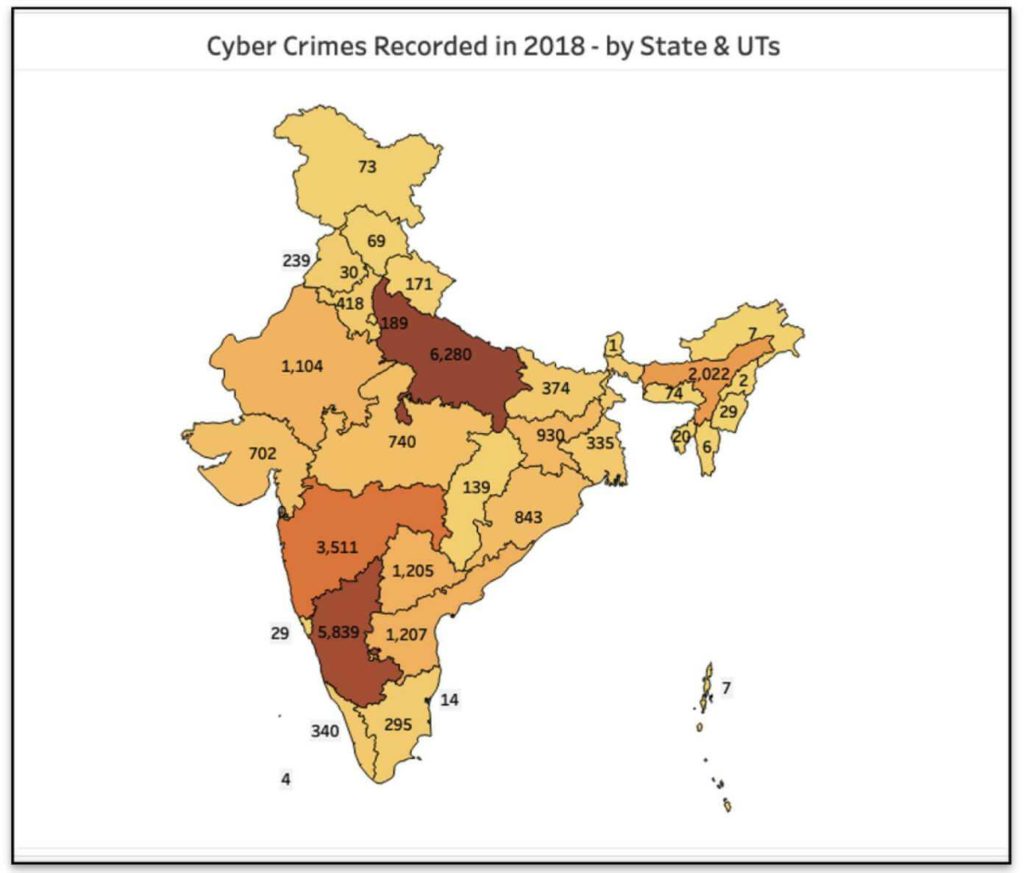
Karnataka has the highest Cyber-Crime Rate
Karnataka has significantly higher rate of Cyber-crimes with 8.9 cyber-crimes per 1 lakh population, compared to other states. Among the other states, Assam comes next with a cyber-crime rate of 5.9 followed by Telangana (3.3).
Maharashtra, UP, Jharkhand, Meghalaya and AP are the other states which have cyber-crime rate higher than India’s national average cyber-crime rate of 2.1.
Although the UT of Lakshadweep has only 4 cyber-crimes recorded, the rate is a high (6) due to relatively lower population of 0.7 lakhs.
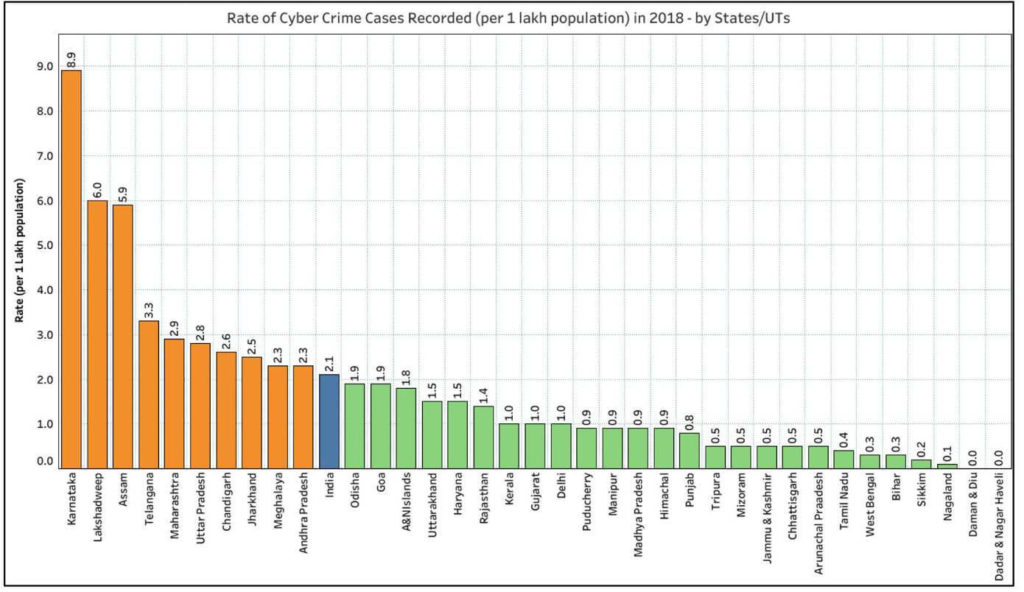
Most of the Cyber Crimes in 2018 relate to Identity Theft & distribution of sexually explicit content.
Among the 27,248 cyber-crime cases recorded in 2018, a major portion i.e. 18,495 cases were registered under IT Act. Of the remaining cases 8,647 cases were registered under different IPC sections while 106 cases were booked under SLL (Special and Local Laws).
Out of the total cases booked under IT act, most of the cases are ‘Computer related offences’ with a total of 14,141 cases in this category in 2018.
Out of the 3,969 cases of ‘Computer related offences under Section 66’, 3219 i.e. 81% of the cases are in Uttar Pradesh. Furthermore, Section 66C which relates to ‘Identify Theft’ forms a major portion of Computer related offences with 6688 cases. Significantly, 76.5% i.e. 5517 cases are registered in Karnataka alone.
Among other Computer related crimes, Section 66D i.e. ‘Cheating by Personation by using computer resources’ also has a significant number in 2018 with 2704 cases. A total of 3076 cases were booked in 2018 under Section 67 of IT Act i.e. ‘Publication/ transmission of obscene / sexually explicit act in electronic form’. UP(738) and Assam (644) have a higher proportion of cases booked under this section.
21 cases were booked in 2018 under section 66 F of IT Act which related to ‘Cyber Terrorism’. Of these 11 were in Tamil Nadu and 8 in Assam.
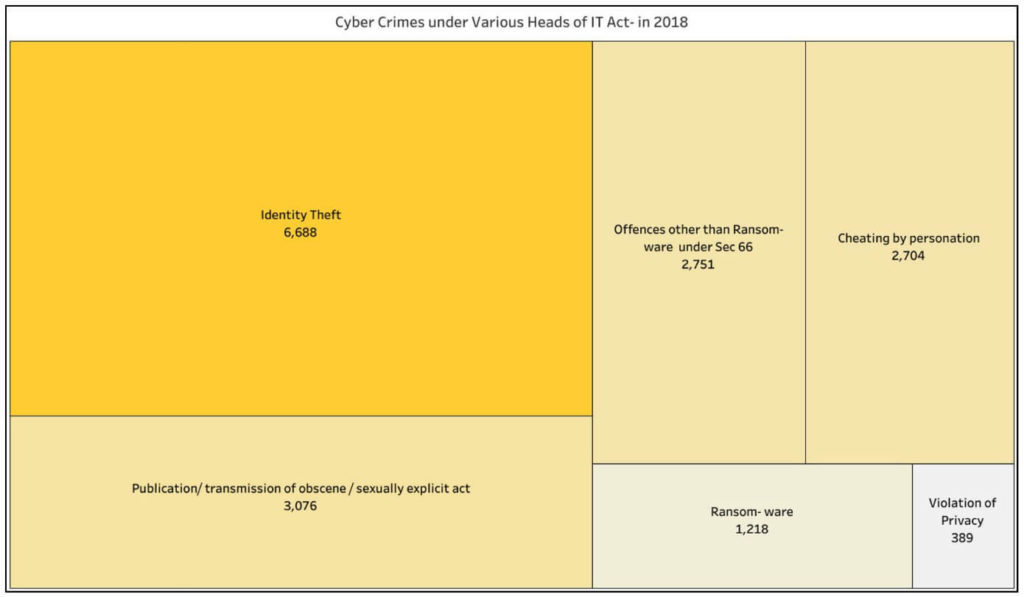
Cheating, Fraud, Cyber Stalking form a majority of cyber-crimes booked under IPC
39% of the cases booked under various section of IPC related to ‘Fraud(under section 420, 465, 468-471)’ i.e. 3,353 cases across all the states and UTs.
Of these, a major portion are related to ATM related frauds with 1284 cases. Bihar, Maharashtra and Odisha are among the states with the highest number of ATM related frauds.
Nearly 1/3rd of the 968 cases related to ‘Online Banking Frauds’ are registered in Maharashtra. Odisha, Telangana and UP also have significant number of cases relating to Online Banking Frauds. Maharashtra with 143 cases also has a significant share of the total Credit Card/Debit Card related crimes.
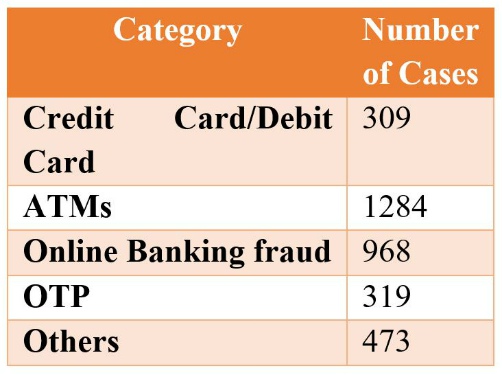
2051 cyber-crime cases are booked under Section 420 i.e. ‘Cheating’. Even under this section, Maharashtra has the highest number of cases with 878, significantly higher than that of second placed Andhra Pradesh which has 251 cases.
The number of cases booked for Section 505 of IPC i.e. ‘Fake News on Social Media’, is less than that of 2017. 97 cases for Fake News were registered in 2018, while it was 170 in 2017.
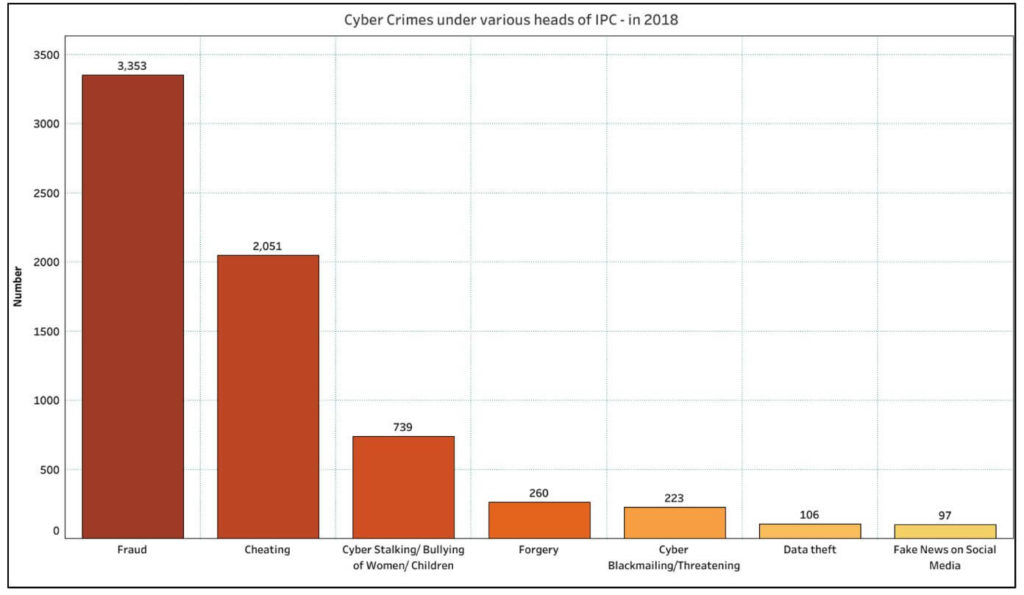
Fraud and Sexual Exploitation are identified to be the major motives
55% of the cyber cases booked in 2018, have ‘Fraud’ as the motive. Out of the total 15,051 cases with motive as ‘Fraud’, more than 1/3rd are in Karnataka with 5,441 cases, followed by UP (2,351) and Maharashtra (1,988).
2,030 cases have ‘Sexual Exploitation’ as motive. The number has increased substantially from 1,460 cases recorded in 2017. As was the case in 2017, the highest number of cases with ‘Sexual Exploitation’ as motive were registered in Maharashtra in 2018 as well with 724 cases.
While the number of cases has come down in Assam, UP has contributed to the increase in 2018.
‘Causing Disrepute’ and ‘Extortion’ continue to be other prime motives even in 2018 with 1,212 and 1050 cases respectfully. 44 of the cyber cases booked have ‘Terrorist activities’ as motive, while 296 were pranks and 218 had political motive.
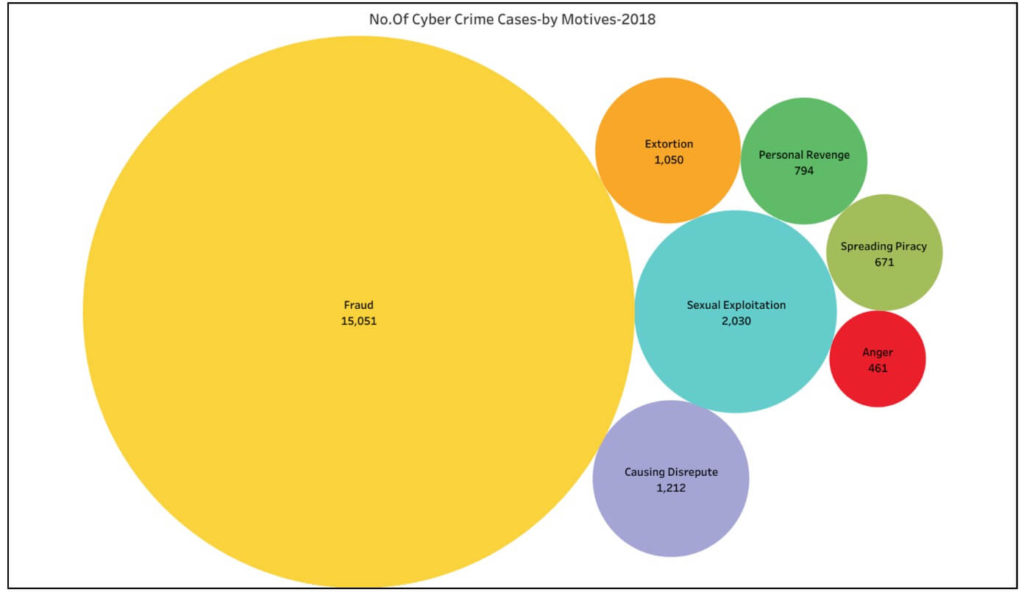
Increase in number of cases can be attributed to increased awareness and better reporting
The cyber-crimes as per NCRB reports is based on the crimes which have been reported and have been taken into cognizance by the law enforcement agencies. One of the major handicaps in reporting a cyber-crime in India has been the lack of awareness among the general public. Lack of a clear process along with lack of resources with the law enforcement agencies in dealing with these crimes add to the problem.
Significant increase in the number of reported cyber-crimes can be attributed to increase in the crimes relating to fraud, identity theft, online cheating etc, which could point to increased awareness to report a crime. Currently there is no conclusive data to indicate absolute increase in number of frauds or other related crimes committed apart from the increase in the cases being reported.
While reporting of a cyber-crime is one part of the story, the action taken by authorities is equally important. Comparing the increase in cyber-crimes reporting with trends in the disposal of cases by police and courts would offer a comprehensive perspective. The analysis of the disposal of these cases will be dealt in the next story.
Featured Image: Cyber-Crimes in India


